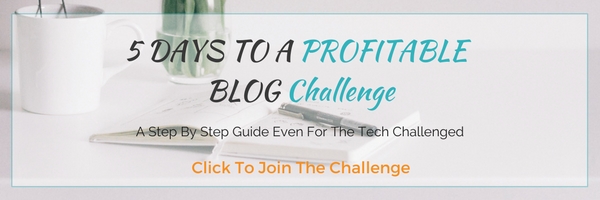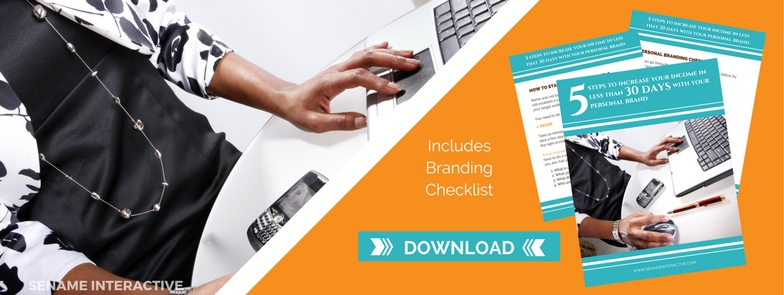“Jacuzzi” is synonymous with hot tubs, “Crockpot” with slow cookers and “Zamboni” is an ice resurfacer. These brands were so well presented that many people wrongly use them as the generic word for the products they represent. That is the power of branding. The ability to evoke powerful connection with your consumers based on your name alone. Do you know what emotion or thoughts come to mind when people hear your name? That emotion or thought is a reflection of your personal brand. Personal branding helps you stand out from the crowd; but building a brand can be an overwhelming task. Whether you are a small business owner or larger corporation, it is important to have a consistent presence. This is the key to your business success. Personal branding includes but is not limited to: interacting and collaborating with like-minded people as well as showcasing your field of expertise. Here are five tips and tools for personal branding to help make this process simpler:
1. Create a Consistent Online Identity:
When it comes to personal branding, you need to create an online identity for yourself and keep it consistent across multiple platforms, thereby allowing people to recognize and remember you and your brand. Create consistent social network profiles and domain name extensions to manage your online reputation. Pick an interesting/memorable name and stick to it. To aide in selecting names it is helpful to use tools that allow you to check if your desired user name is available. This saves time especially if you are just beginning to build your brand. One such tool is Name Check. Just type in your desired name in Name Check and you will be notified of its availability. I would advise picking a name that resonates with you and registering it on as many available platforms as possible and within sustainable reason. Social media channels are constantly changing and we really do not know when a channel will soar with popularity. Snap Chat, Pinterest and Instagram are just a few examples. If you have a profile already created in the platform, you lessen the risk of having your “identity” taken.
2. Create a Digital Destination:
A digital destination is your personal website. This is your online real estate, your home, your Casa de {insert name here}. You own everything you post here. Why is this important? Because sadly you do not own anything you post on other platforms. This means you need to ensure that you have a place to invite your “guests” to. This is where they are able to learn more about you. As any good host/hostess knows, you need to keep your home inviting. You accomplish this with your personal website by keeping it fresh and updated with your blogs, compelling content, and accomplishments; making sure all your social links point to your home base (personal website). There are a variety of tools available to create a website and you do not need to be a technical expert to use them. Your best bet is to start with a template. You will, however, need to invest a few hours to set up correctly, get the site up and running with all your desired elements and features. Think of this step as decorating your home. Squarespace, Wix and WordPress, are examples of excellent tools to get your website up and running. They are user-friendly in designing a visually appealing website. In my opinion, WordPress is the most robust option, featuring many ways to customize the look and feel of your site. An added bonus is the support of numerous plug-ins. Don’t forget to connect your social media profiles and email tools to your website.
3. Create and Share Valuable and Compelling Content:
The next step with personal branding is to show your area of expertise. How do you do this? The answer is blogging. People will not know what you are an expert in, unless you tell them. You can do so by creating valuable and compelling content in your subject area and sharing it with as many people as possible. Yes, blogging can be a daunting task because creating fresh and unique content is not always easy. However, a consistent blogging presence that showcases your expertise is a surefire way to stamp your name in the minds and hearts of your consumers. View blogging as story-telling; a way to share your brand narrative. Scoopit and Feedly are some wonderful tools for content creation, curation and sharing. Providing ideas from top performing blogs. These tools suggest posts on your home page and offer ways of curating content. Scoopit has an added benefit in that it also allows commenting on content that is most popular in a community and has an inbuilt RSS management that helps with finding content, curation, sharing.
4. Engage with Social Channels:
Dormant social profiles and websites are damaging to your personal brand. One of the biggest mistakes you can make is creating a social profile, posting it on your blog or website, but not managing the profile in question. If you have a profile that you created to capture your brand, but aren’t using it yet, do not advertise it. Only advertise what you are actively using and managing well. Although spending a lot of time on social networks is neither possible nor feasible for all, especially considering most people have a busy day to day life, it is important to keep yourself engaged with social communications. This helps you keep abreast of trends in your field and aids in expanding your knowledge and reach. With the increase in number of social media networks, there are several new tools available to manage social engagement. Of the ones personally tested, HootSuite stands out as it allows you to organize popular social channels in your home page easily. You can also setup “social listening”- tracking hash-tags, brands or people to follow as well as providing analytic tools to track and discover more about social media interaction. If this does not cater to your needs, there are options such as Sprout Social and Raven Tools that may be better suited to you.
5. Engage through Emails:
Email marketing is not a dead horse. It is an excellent way of getting and staying connected with your audience. Remember, all your followers and fans on the different social networks are not truly yours; they belong to that network. You need to bring them into your personal space, and to do so, you require their permission to engage them outside of those platforms. You can get explicit permission to engage with your audience when they sign up to your mailing list. Think of it like the family that sends out a monthly newsletter to their friends and family, updating them on what is going on with them presently and what is to come. Similarly, a mailing list can serve as your newsletter to keep your guests up to date.
Mailchimp and Mailerlite is an excellent tool to create and manage email lists and email templates as well as manage and track your emails. It enables you to share your recent blogs with email subscribers thereby promoting your business offers.
6. Create Eye Catching Graphic Images
In the age of memes and vines, images (pictures) are a must-have when it comes to personal branding. Images attract readers; thus the need for a good image creator. Canva is an easy-to-use tool for creating stunning images. You can create your own designs without any prior designing knowledge. The tool offers multiple features, including a way to add your own text to a picture, collate two images etc. Although there are some images you may have to pay for, there are also a lot of free images and you are able to upload your own images for your design .When you have the right tools for the job, personal branding can be a walk in the park. I hope these tips and tools for personal branding will help get you started in you building a successful personal brand.
Have you started building your personal brand? What tools do you use? Share it with us!










